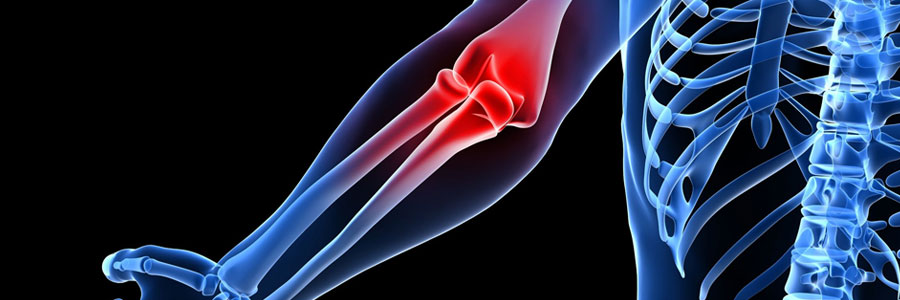JOINT PAIN
At some point in time every one of us will experience joint pain.

This can be the result of an acute injury (such as falling onto an outstretched hand or getting struck during a contact sport) or chronic repetitive injury (such as tennis or golfer’s elbow, carpal tunnel syndrome). Some joint pain is degenerative and develops over many years (such as in arthritis).
The joint is the attachment (or junction) between two or more bones. Muscles attach to bones by tendons (to move them) and bones attach to other bones by ligaments. Tendons and ligaments contain collagen for elasticity but are unfortunately poor in blood supply which is why they don’t heal very well when injured. These attachments are higher in tension and more prone to injury when the muscle is extended (stretched).
The treatment of joint pain depends on the joint, the mechanism and timing of injury (how and when the pain started), and the severity of the pain.
If joint patient is severe and involves significant swelling and bruising, you should see your physician. If the joint is deformed (like a shoulder or knee dislocation) and associated with severe pain, you should see your physician urgently or seek urgent care. A joint can be strained (torn), sprained (over stretched), dislocated, or fractured (intraarticular injury). Strains and sprains (e.g. twisted ankle) can usually be treated conservatively with the PRICE method: pain relievers, relative rest (“just taking it easy”), ice and/or heat, compression and elevation (when swelling is present) Dislocations and fractures need urgent attention to reduce the risk of permanent injury to the nerve or blood supply and to ensure the best opportunity to reestablish the integrity of the joint. This is important because the stability and integrity of the joint affects your ability to move (e.g. walking, swimming, propelling a wheelchair) and handle the world around you, (e.g. writing, driving, holding a child, or kicking a ball).
Chronic joint pain, such as in arthritis, can oftentimes be degenerative. A combined approach involving weight loss, pain relievers, exercise and or therapy can be effective in most people. Occasionally a joint injection is helpful and as a last resort the joint can be replaced.
Chronic repetitive injuries (e.g. tennis or golfer’s elbow, shin splints, plantar fasciitis, carpal tunnel syndrome) require a more detailed history as these occur over time. Initially you should identify the cause of the injury which could be improper technique, muscle tightness, muscle weakness, poor work station set up, or not using protective equipment to prevent the injury. Modification of these factors can improve these conditions over time but not immediately. Their treatment is more complex and may involve pain medications, therapy, injections of steroids / anesthetics, and as a last resort, even surgery.
If your joint pain is affecting your life, I’d like to help you change this.

